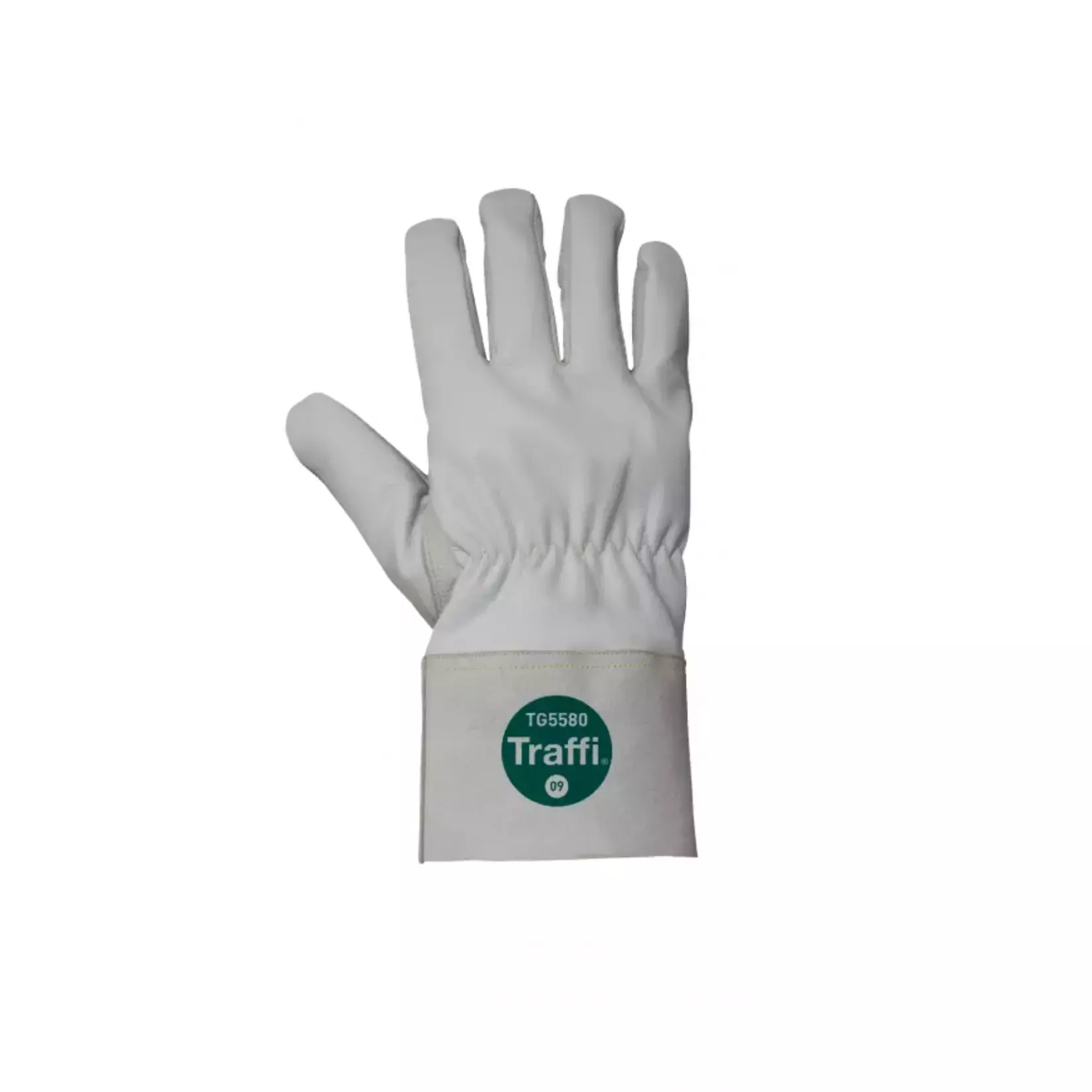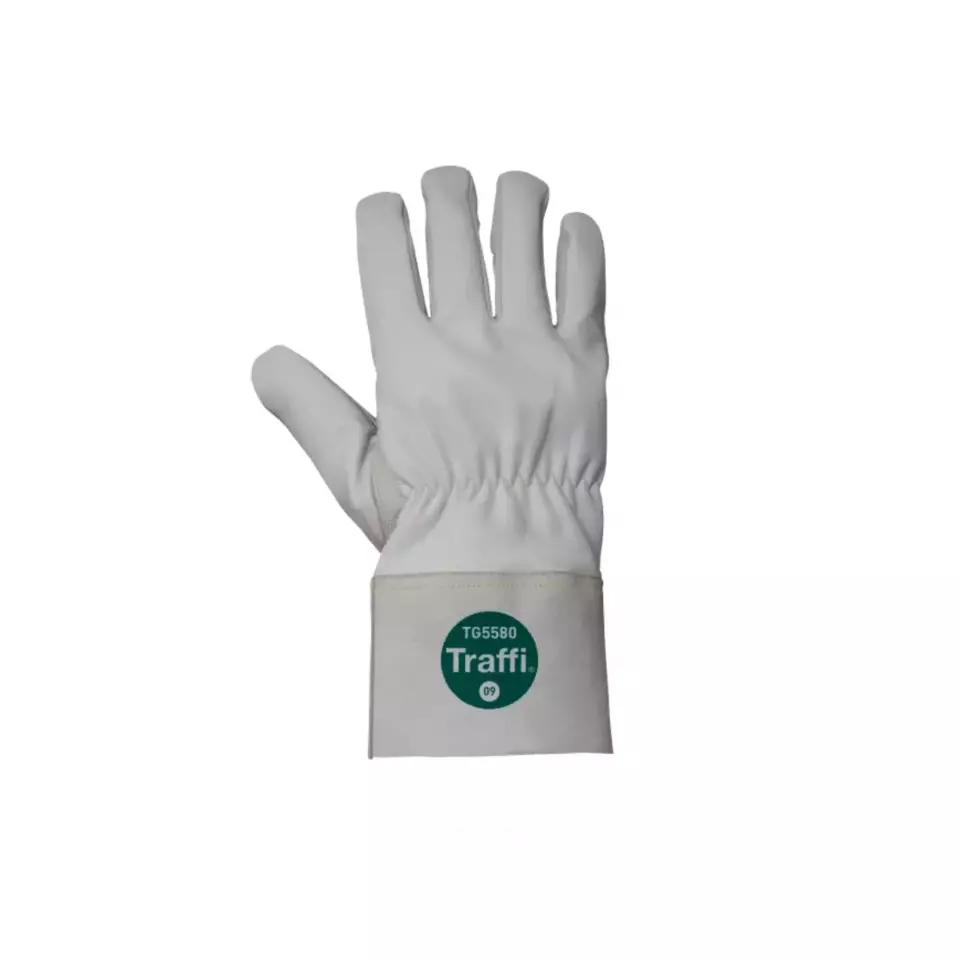
Traffi LEATHER Cut Level D Safety Glove
Traffi LEATHER Cut Level D Safety Glove
4.5 / 5


Features You'll Love

Cuff Style · Open
Determines how the glove secures around the wrist, affecting fit, comfort, and protection coverage at the wrist area.
Determines how the glove secures around the wrist, affecting fit, comfort, and protection coverage at the wrist area.
Determines how the glove secures around the wrist, affecting fit, comfort, and protection coverage at the wrist area.
Traffi
LEATHER Cut Level D Safety Glove, 10 pairs
LEATHER Cut Level D Safety Glove, 10 pairs
4.5 / 5
376,80 €
Price per 10 pairs
37,68 € / pair
Choose size
Free delivery
Features You'll Love

Cuff Style · Open
Determines how the glove secures around the wrist, affecting fit, comfort, and protection coverage at the wrist area.
Determines how the glove secures around the wrist, affecting fit, comfort, and protection coverage at the wrist area.
Determines how the glove secures around the wrist, affecting fit, comfort, and protection coverage at the wrist area.
Product description
The product description has not been specified
The product description has not been specified
The product description has not been specified
Determines how the glove secures around the wrist, affecting fit, comfort, and protection coverage at the wrist area.
Defines the overall design and construction approach, including finger coverage, construction method, and specialized features for different work applications.
The exterior color of the gloves, which can aid in workplace identification, visibility, and compliance with safety protocols.
The material used on the back of the glove, affecting breathability, flexibility, and comfort during extended wear.
The substance applied to glove surfaces to enhance grip, durability, and protection, with different materials suited for various work conditions.
The base material that forms the inner structure of the glove, affecting cut protection level, comfort, flexibility, and breathability against your skin.
Gloves with the EN 407:2004 rating are tested for protection against various thermal risks including flammability, contact heat, convective heat, radiant heat, and splashes of molten metal. This means you can choose gloves that offer certified protection against specific heat and fire hazards for your safety.
Test results
Provides protection when briefly touching hot objects. Certified for contact with surfaces up to 100°C for at least 15 seconds, offering short-term protection against burns from items like hot cookware or machinery parts.
Provides the highest level of protection against catching fire when exposed to a naked flame. After the flame is removed, the material will stop burning within 2 seconds and stop glowing within 5 seconds.
Provides a good level of protection by delaying the transfer of heat from a flame for at least 10 seconds. This makes it suitable for tasks where your hands might be briefly exposed to open flames.
Offers the highest level of protection (Level 4) against large splashes of molten metal, like iron. Built for demanding industrial jobs such as foundry work, providing essential safety when exposed to significant molten material splashes.
Provides protection against large splashes of molten metal, specifically tested to withstand up to 60 grams. This is suitable for tasks like welding or foundry work where accidental contact with significant amounts of molten material is a risk.
Protective gloves with the EN 388:2016 rating are tested for resistance against mechanical risks like abrasion, cuts, tears, punctures, and optional impact. This rating helps you quickly identify and choose gloves that offer the right level of protection for your hands during various tasks.
Test results
Offers moderate resistance against snagging or catching on rough objects, preventing small rips from growing.
Provides good resistance against scraping, scratching, and rubbing on rough or abrasive surfaces.
Withstands moderate force from sharp objects like heavy-duty splinters or wires.
Gloves with the EN 511:2006 rating are tested for protection against convective cold (from air/wind), contact cold (from touching objects), and water penetration. This helps ensure your hands stay warm and protected in various cold conditions, preventing discomfort and cold-related injuries.
Test results
Provides light thermal insulation when directly handling cold objects. This offers basic protection for short or intermittent contact with cold surfaces, suitable for general tasks in cool conditions rather than prolonged exposure to extreme cold.
Free delivery for all Traffi products